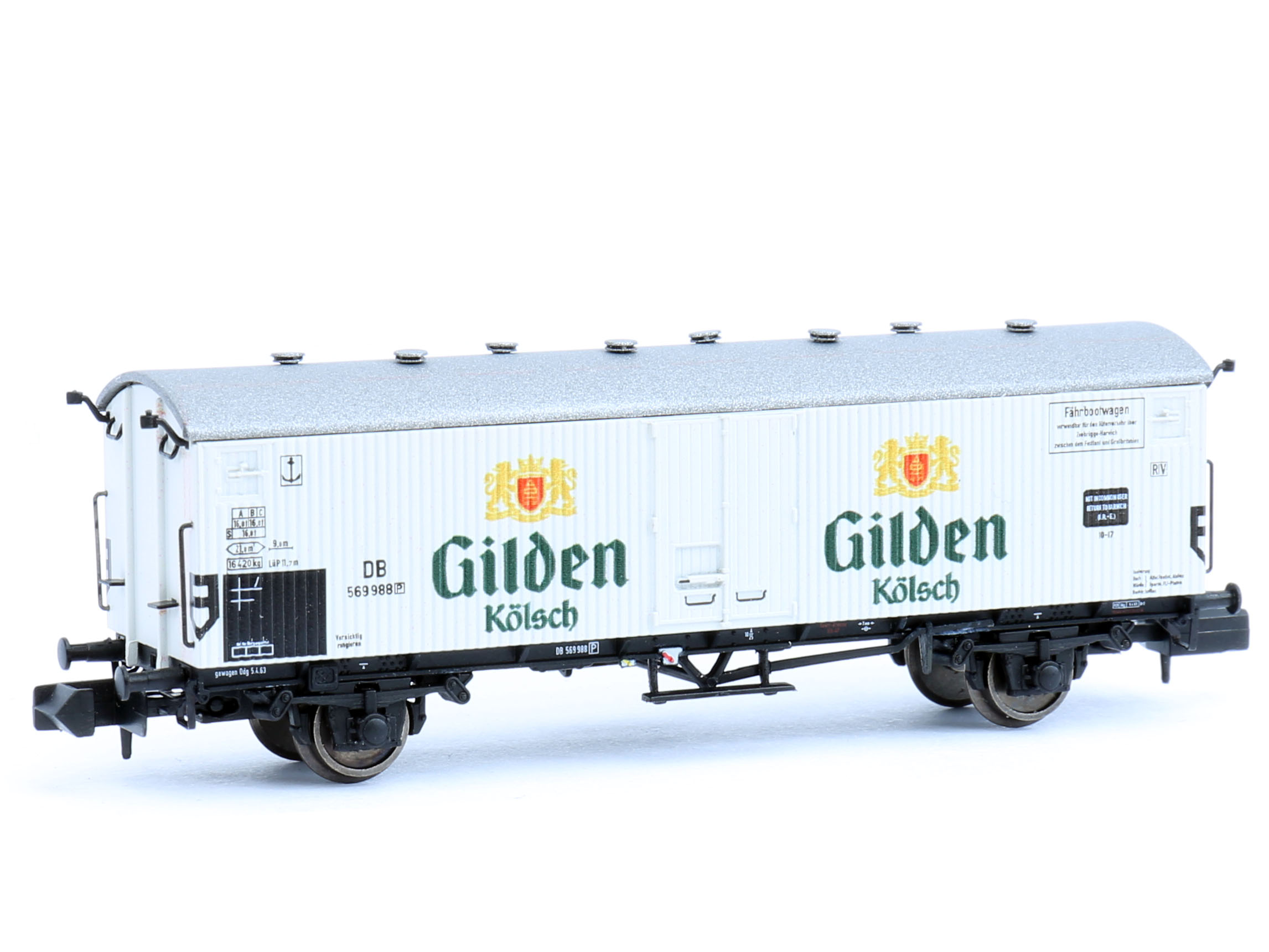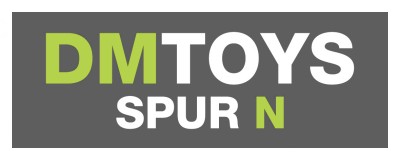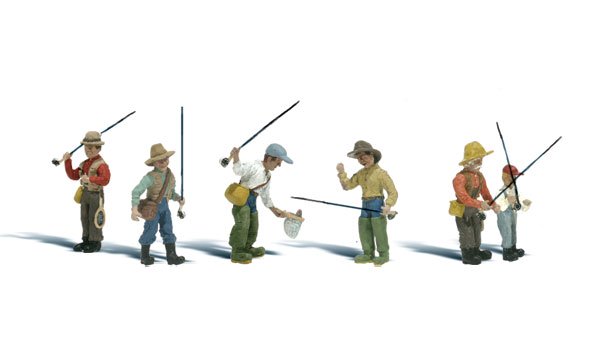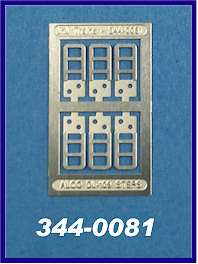Specific Item Information: For the use of freight wagons in traffic to Great Britain, freight wagons were required that corresponded to the smaller British clearance gauge and, in addition to the well-known air brake, had the suction air brake system common in Great Britain. For this purpose, the DRG procured, after covered wagons and stake wagons with hand brakes, from 1935 50 refrigerated cars in two lots, but without handbrake. The wagons had ice bins that were filled through the overhead doors. They were hired as Gfkhs Saarbrücken, later they were given the designation Tbnhs Berlin. Many survived the Second World War, around 20 came to the DB in 1950, some cars also to the DR. The DB rented around half of the Tbnhs to Transthermos, the rest were given the designation Tbnhs 30. 19 cars were still designated as UIC in 1964 -compliant type designation Icfrs 400 (epoch IV) intended, but most of them were taken out of service by 1969, as the railroad was too slow compared to the competition on the road, especially in refrigerated transport.
The Modellbahn Union gauge N models of the Tbnhs wagons in the scale 1: 160 are characterized by detailed design and printing. Different addresses as well as different paint conditions based on the usage time are also taken into account. All models have a close coupling link and NEM coupling pockets. The length overhang is 7.3 cm per car.
Model Information: Unspecified Body Style
Road Name History: 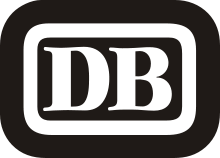 Deutsche Bundesbahn was the Western Germany DB before reunification. After World War II, Germany (and the DRG) was divided into 4 zones: US, British, French and Soviet. The first three eventually combined to form the Federal Republic of Germany (the West) and the Russian zone became the German Democratic Republic (the East). German territories beyond the Oder were ceded to Poland except for the northern part of East Prussia, which was ceded to the Soviet Union in 1945.
Deutsche Bundesbahn was the Western Germany DB before reunification. After World War II, Germany (and the DRG) was divided into 4 zones: US, British, French and Soviet. The first three eventually combined to form the Federal Republic of Germany (the West) and the Russian zone became the German Democratic Republic (the East). German territories beyond the Oder were ceded to Poland except for the northern part of East Prussia, which was ceded to the Soviet Union in 1945.
From 1949, the new governments assumed authority for railway operations. The DRG's (or DR's) successors were named Deutsche Bundesbahn (DB, German Federal Railways) in West Germany, and Deutsche Reichsbahn (DR, German State Railways) in East Germany kept the old name to hold tracking rights in western Berlin.
Unlike the DRG, which was a corporation, both the DB and the DR were federal state institutions, directly controlled by their respective transportation ministries. Railway service between East and West was restricted; there were around five well-controlled and secure checkpoints between West and East Germany, and about the same number between East Germany and West Berlin. Four transit routes existed between West Germany and West Berlin; citizens of West Berlin and West Germany were able to use these without too much harassment by the East German authorities.
The DB started in 1968 with changing the locomotive and passenger car serial numbers to the UIC norm. In 1970 the DR followed. The DB started experimenting with the Intercity trains in a new livery (bright orange).
In 1989, the Wall fell. Train frequency rapidly increased on the existing East/West corridors; closed links which had formerly crossed the border were re-opened. On 3 October 1990, Germany was reunified; however, this was not immediately the case with the railways. Administrative and organisational problems led to the decision to completely re-organize and reconnect Germany's railways. The so-called Bahnreform (Railway Reform) came into effect on 1 January 1994, when the State railways Deutsche Bundesbahn and Deutsche Reichsbahn were formally reunited to form the current German Railway Corporation (Deutsche Bahn).
From Wikipedia

From 1949, the new governments assumed authority for railway operations. The DRG's (or DR's) successors were named Deutsche Bundesbahn (DB, German Federal Railways) in West Germany, and Deutsche Reichsbahn (DR, German State Railways) in East Germany kept the old name to hold tracking rights in western Berlin.
Unlike the DRG, which was a corporation, both the DB and the DR were federal state institutions, directly controlled by their respective transportation ministries. Railway service between East and West was restricted; there were around five well-controlled and secure checkpoints between West and East Germany, and about the same number between East Germany and West Berlin. Four transit routes existed between West Germany and West Berlin; citizens of West Berlin and West Germany were able to use these without too much harassment by the East German authorities.
The DB started in 1968 with changing the locomotive and passenger car serial numbers to the UIC norm. In 1970 the DR followed. The DB started experimenting with the Intercity trains in a new livery (bright orange).
In 1989, the Wall fell. Train frequency rapidly increased on the existing East/West corridors; closed links which had formerly crossed the border were re-opened. On 3 October 1990, Germany was reunified; however, this was not immediately the case with the railways. Administrative and organisational problems led to the decision to completely re-organize and reconnect Germany's railways. The so-called Bahnreform (Railway Reform) came into effect on 1 January 1994, when the State railways Deutsche Bundesbahn and Deutsche Reichsbahn were formally reunited to form the current German Railway Corporation (Deutsche Bahn).
From Wikipedia
Brand/Importer Information: Modellbahn Union is a hobbyshop in Kamen, near Dortmund, Germany. They also produce their own range in HO, TT and N scales.
Manufacturer Information: DM-Toys is a small company headquartered in Issum in the Lower Rhine area, Germany. DM-Toys has specialized in the wholesale trade and mail order of N scale products from all over the world. DM-Toys also operates its own small manufacturing in Germany. The majority of its goods is however produced for us abroad (UK, U.S., Japan and China).
Item created by: lukas.r.gray on 2022-09-22 06:03:41
If you see errors or missing data in this entry, please feel free to log in and edit it. Anyone with a Gmail account can log in instantly.
If you see errors or missing data in this entry, please feel free to log in and edit it. Anyone with a Gmail account can log in instantly.


